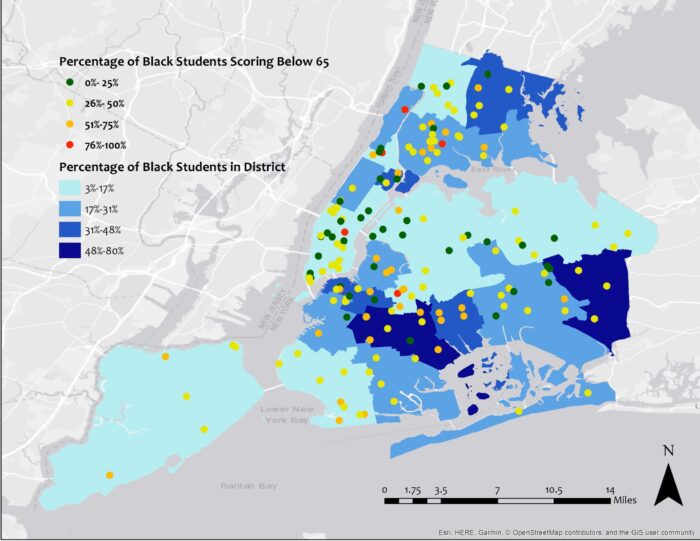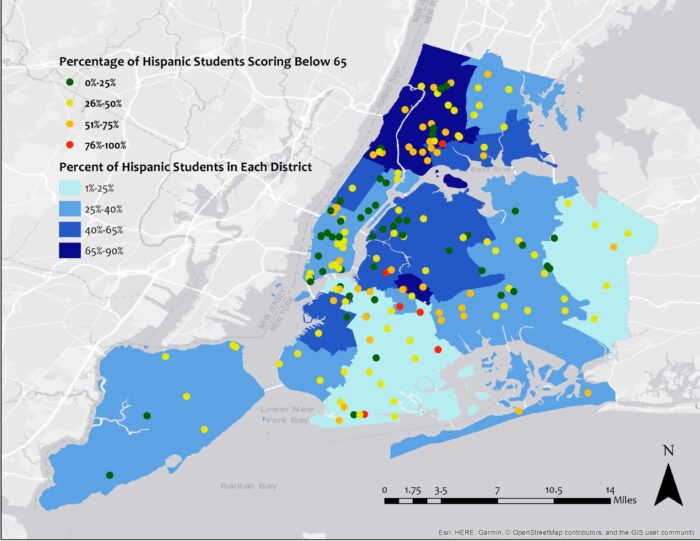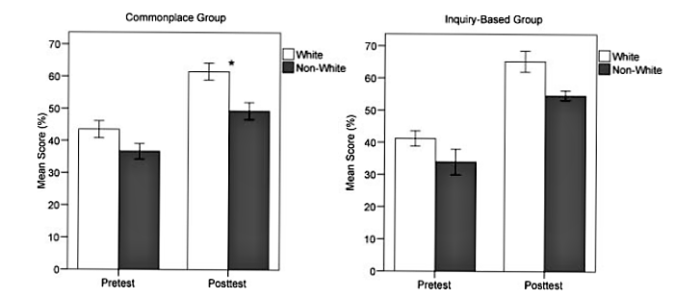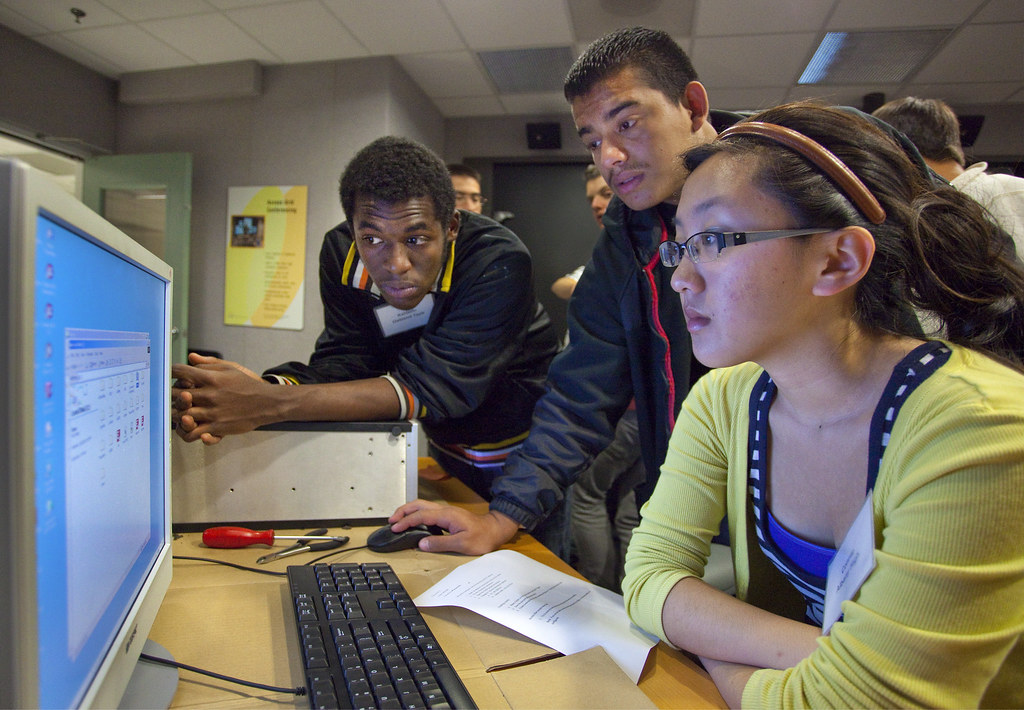We often hear that we (educators, parents, the public, everyone!) should be encouraging students to consider STEM fields, especially students who are typically underrepresented. Yet, despite more resources pouring into STEM programs, a significant gap persists between the number of white students and students of color who STEM paths available to them after high school. The NYC Department of Education can no longer afford this discrepancy. STEM fields are expected to be “problem-solving” fields, dedicated to using an empirical approach to understanding and improving society; however, this cannot be achieved if one demographic is consistently voicing the main narrative used to identify, research, and solve societal problems.
In January, the New York State Department of Education presented a new framework to the New York Board of Regents for instituting and implementing Culturally Responsive Curriculum across all public high schools. Educators generally support the framework, as many have been proponents of such a proposal for decades. Culturally Responsive Teaching (CRT) is defined as “using the cultural knowledge, prior experiences, frames of reference, and performance styles of ethnically diverse students to make learning encounters more relevant to and effective.” CRT has been at the forefront of curriculum discussions since educator Gloria Ladson Billings first coined the term in her book, Dreamkeepers in 1994. Numerous studies (including this one from 2010) have discussed the effectiveness of culturally relevant strategies in encouraging students to learn and actively participate in classes. In high school curricula, this involves updating course materials to reflect the identities of students, creating stories, projects, peer-teaching, playing curricula-aligned games, and other methods.
There is a misconception that CRT must only be used to motivate students of color and students of “diverse” backgrounds. Any Google search of the term elicits multiple YouTube videos of teachers rapping about The Louisiana Purchase to a room of giggling teenagers. Yet, Zanetta Hammond, CRT researcher, argues that culturally responsive curriculum can be, and is, beneficial to everyone. CRT does not assume that all students learn the same way, and provides different strategies that educators can use to create inclusive classrooms where students learn through each other’s experiences and contexts. Billings divides CRT into two concepts: culturally responsive curriculum and culturally responsive pedagogy. The curriculum must incorporate the diverse experiences of a classroom’s students into the study materials, and pedagogy modifies the teaching methods. Yet, while the framework for a CRT implementation in NYS schools describe the incorporation new stories and authors of color into humanities curriculum, it did not describe a similar update into STEM curriculum. Chris Emdin’s argues in his book, Urban Science Education for the Hip-Hop Generation, that because science and math as disciplines have historically excluded people of color from their narratives, that any student who feels they are excluded from the history of science will necessarily be excluded from the classroom.
Student Scoring in Biology Regents Exam by Race in NYC High Schools

Data Retrieved from the NYS DOE and NYC DOE
Map Created by Madi Delaney

This map depicts Data on Demographics and Testing from the 2017-2018 School Year.
Data Retrieved from the NYS DOE and NYC DOE
Map Created by Madi Delaney

This map depicts Data on Demographics and Testing from the 2017-2018 School Year.
Data Retrieved from the NYS DOE and NYC DOE
Map Created by Madi Delaney

This map depicts Data on Demographics and Testing from the 2017-2018 School Year.
Data Retrieved from the NYS DOE and NYC DOE
Map Created by Madi Delaney
Consistently, students attain lower scores on STEM regents exams, the very exams that the aforementioned DOE framework aim to address. Yet, despite widespread recognition of this significant opportunity gap in STEM, the Department of Education continues to invest in traditional STEM programs that focus on integrating more technologies into the classroom. However, these new initiatives frequently allocate funding to already “successful” STEM programs. Although these programs and initiatives incentivize careers and interest in the STEM field, they do not necessarily increase accessibility to STEM fields for students who have not traditionally been encouraged to pursue these pathways.
Frequently, science and math curricula are instructed through a banking method of “what is true”– statements of fact that must be understood in order to move forward in the lesson plans. But many educators and research have recognized this to be an ineffective approach. A frequently cited goal of effective STEM curriculum is to foster within students a sense of curiosity and critical thinking about the world around them. This study published in 2010 establishes causality between inquiry-based curricula in STEM classes to higher academic achievement in their subjects. However, it also cites that through this curricula change, gaps in course achievement persist between races, genders, and socioeconomic classes. While many factors act together to create this gap, many inquiry-based STEM curriculums still lack a culturally responsive approach. When students are consistently making inquiries into experiments and demonstrations that are not rooted in an environmental or social context, many students find STEM curriculum disengaging.

As scientists become more aware of their biases and limitations due to their own personal experiences, it is increasingly important for researchers in these fields to understand and study disparities in resource distribution, the effects of environmental racism on marginalized communities, and why previous decades of medical research has been flawed to favor white men. Alice Pawley asked in her essay, “What Counts as Engineering: A Redefinition,” “how can we solve these problems, if the majority of people who are researching them have never interacted with them themselves?” If we are not constantly teaching students that scientific inquiry can be used to challenge ideas of societal inequality, then we are doing a disservice to students who are interested in pursuing careers in STEM.
In my ninth grade science class, we began by learning the scientific method. Except, instead of being told the parts of the scientific method and defining them, we read and analyzed a series of popular science articles in groups, and then identified which pieces of the scientific method were used in the inquiry of the article. If the article did not include an accurate discussion of each part of the scientific method, we determined that the study came to a false conclusion, and could not be considered actual scientific evidence. Each article addressed misconceptions about social inequalities and problems, such as, “Are men smarter than women in some subjects?” Through this activity, our class thought critically not only about scientific research as addressing social problems, but also as potentially proliferating misinformation. We had agency as students to assess the legitimacy of work being conducted around our own identities, while still learning a benchmark skill. Through this exercise, our teacher had vocalized the historic exclusion of marginalized students and people from STEM, and positioned all of us as agents of change. When teachers make this effort to teach to their students’ diverse experiences, adjusting curriculum to their cultures and circumstances, they create an environment where questions are posed, problems are identified, and solutions are worked on that would not otherwise come to fruition. In a STEM classroom where each student’s experiences are valued, it creates the new narrative that marginalized students are welcome and needed in STEM fields, as they are. I urge the NYC Department of Education to consider the unique experiences of its students, and recognize the potential of CRT to shape the new face of STEM fields.
